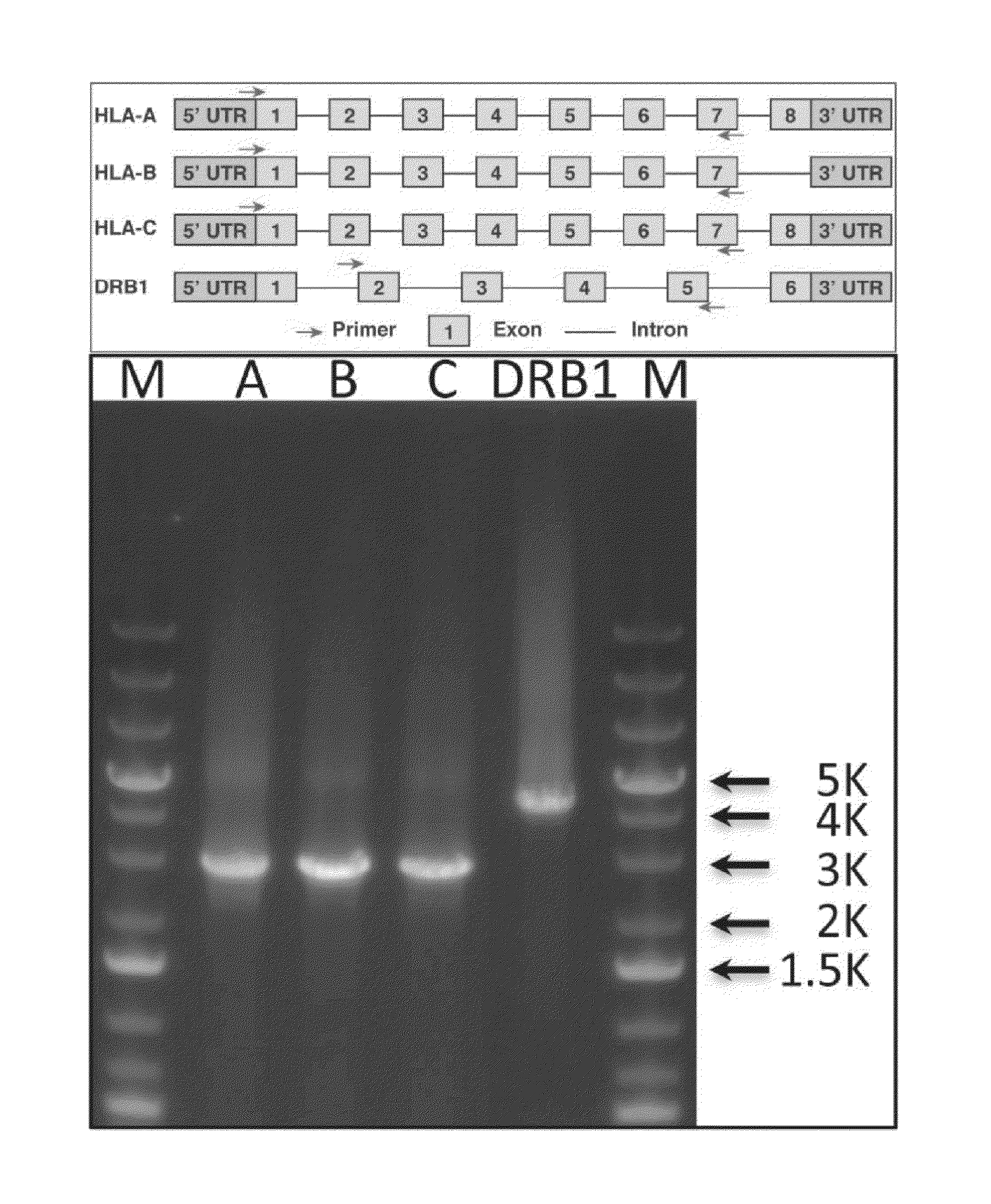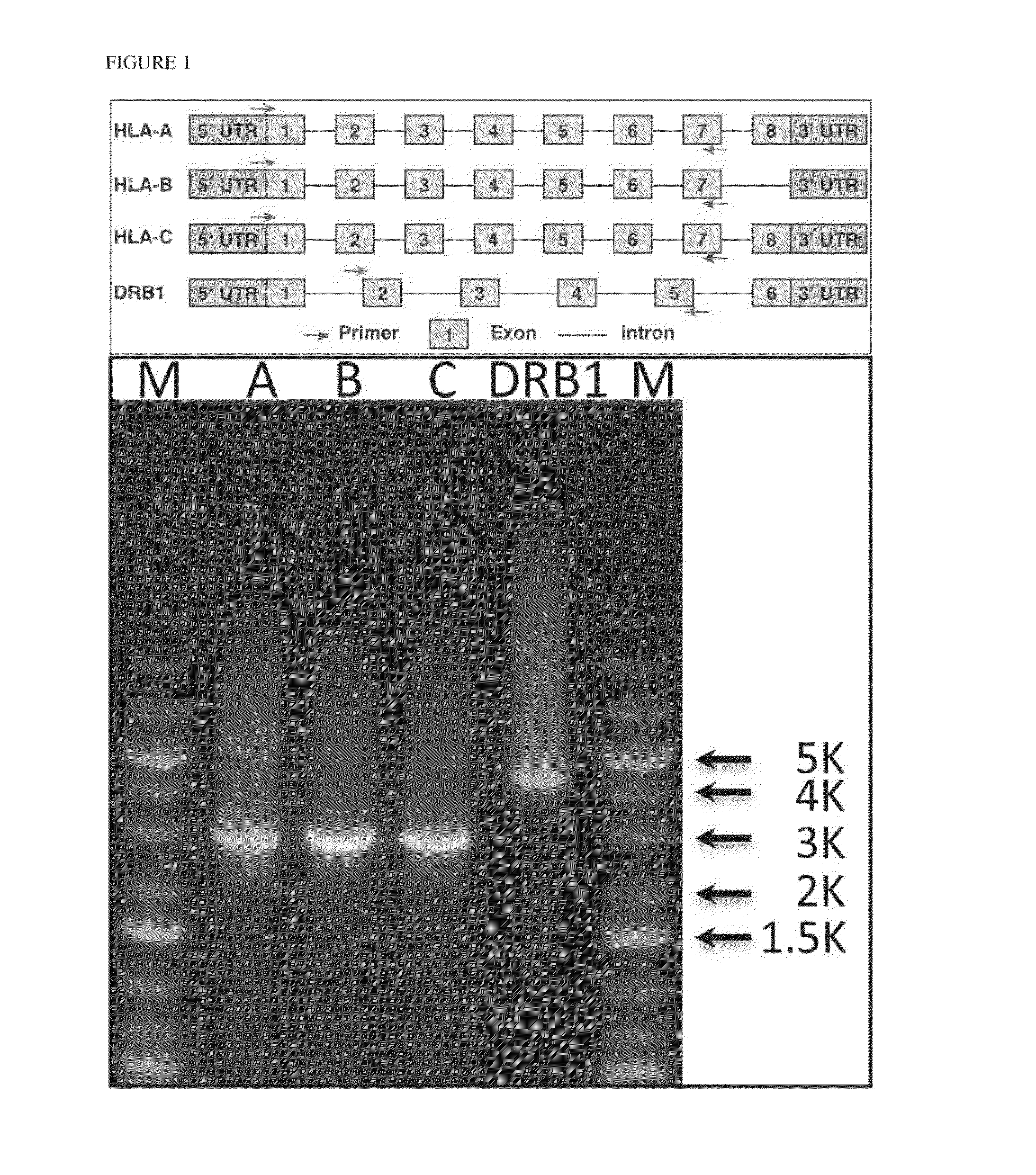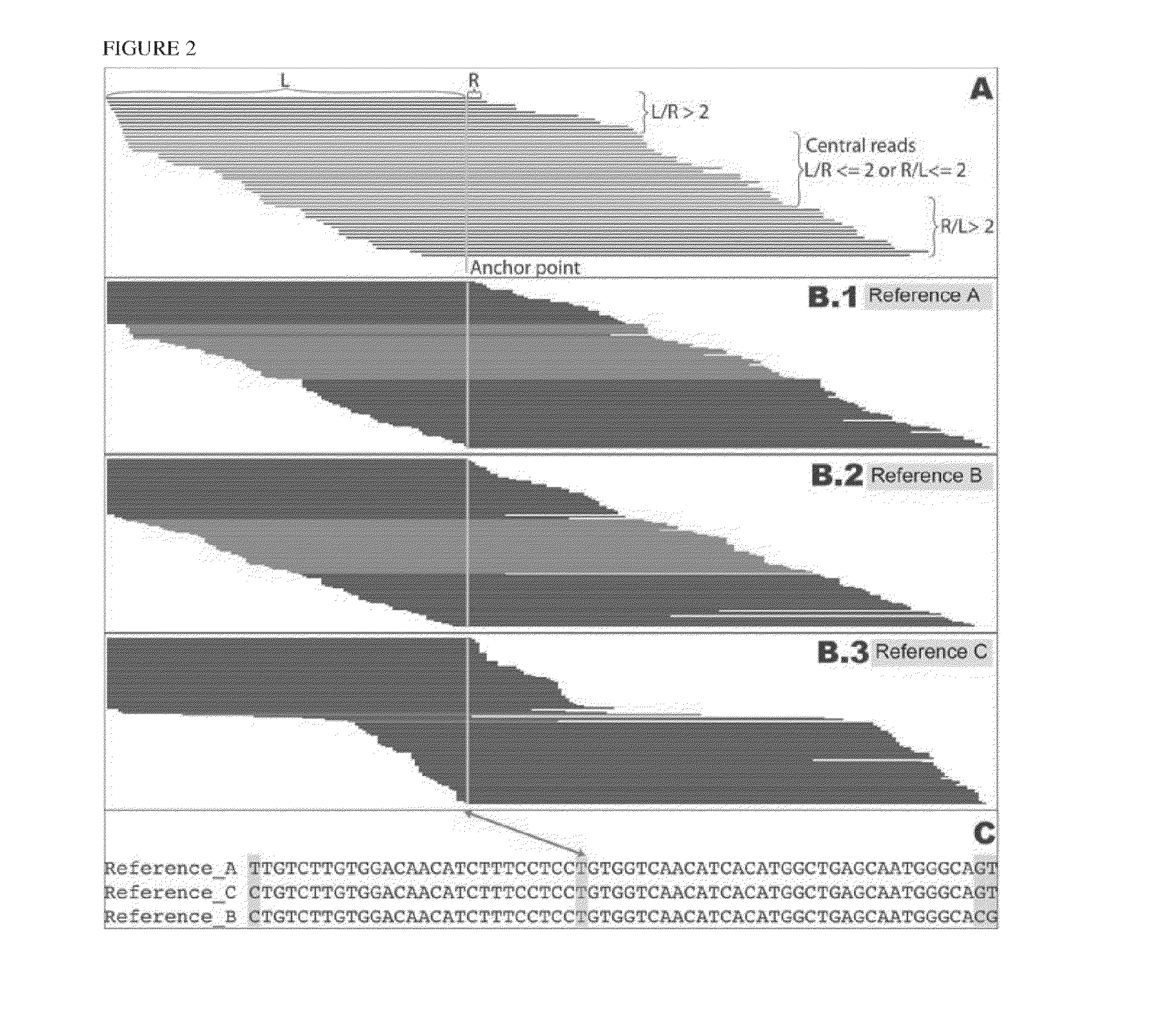Software haplotying of HLA loci
a software and locus technology, applied in the field of software haplotying of hla loci, can solve the problems of high-throughput results, high cost, and inability to obtain accurate results, and achieve the effects of reducing primer filtering, accurate genotype calling, and improving resolution of genetic differences
- Summary
- Abstract
- Description
- Claims
- Application Information
AI Technical Summary
Benefits of technology
Problems solved by technology
Method used
Image
Examples
example 1
Accurate Determination of Haplotype of HLA Loci with Ultra-Deep, Shot-Gun Sequencing
[0203]Human leukocyte antigen (HLA) genes are the most polymorphic in the human genome. They play a pivotal role in the immune response and have been implicated in numerous human pathologies, especially autoimmunity and infectious diseases. Despite their importance, however, they are rarely characterized comprehensively because of the prohibitive cost of standard technologies and the technical challenges of accurately discriminating between these highly-related genes and their many alleles. Here we demonstrate a novel, high resolution, and cost-effective methodology to type HLA genes by sequencing, that combines the advantage of long-range amplification and the power of high-throughput sequencing platforms. We calibrated our method using 40 reference cell lines for HLA-A, -B, -C, and -DRB1 genes with an overall concordance of 99% (226 out of 229 alleles), and the 3 discordant alleles were subsequentl...
PUM
| Property | Measurement | Unit |
|---|---|---|
| Tm | aaaaa | aaaaa |
| temperature | aaaaa | aaaaa |
| pH | aaaaa | aaaaa |
Abstract
Description
Claims
Application Information
 Login to View More
Login to View More - R&D
- Intellectual Property
- Life Sciences
- Materials
- Tech Scout
- Unparalleled Data Quality
- Higher Quality Content
- 60% Fewer Hallucinations
Browse by: Latest US Patents, China's latest patents, Technical Efficacy Thesaurus, Application Domain, Technology Topic, Popular Technical Reports.
© 2025 PatSnap. All rights reserved.Legal|Privacy policy|Modern Slavery Act Transparency Statement|Sitemap|About US| Contact US: help@patsnap.com



